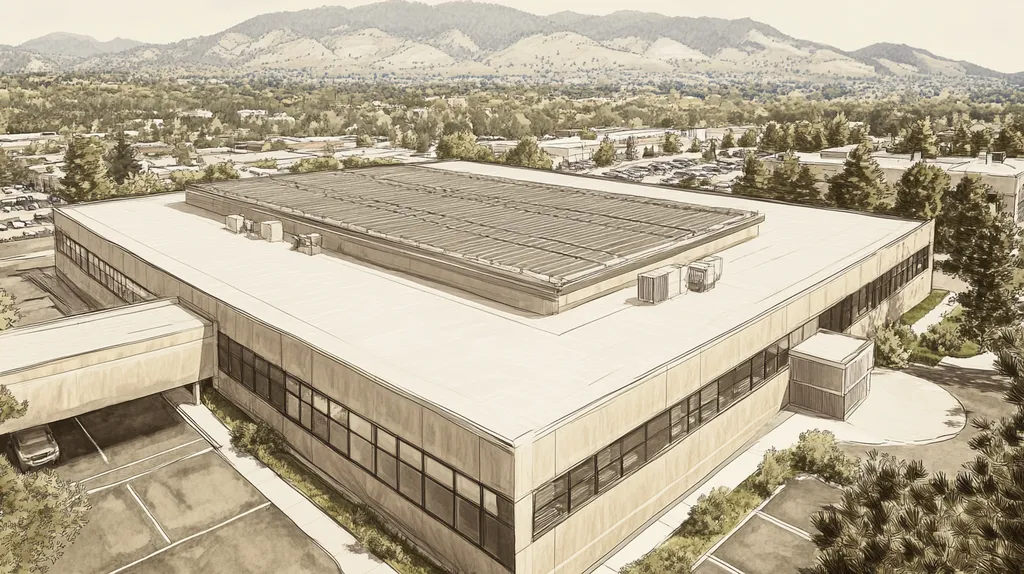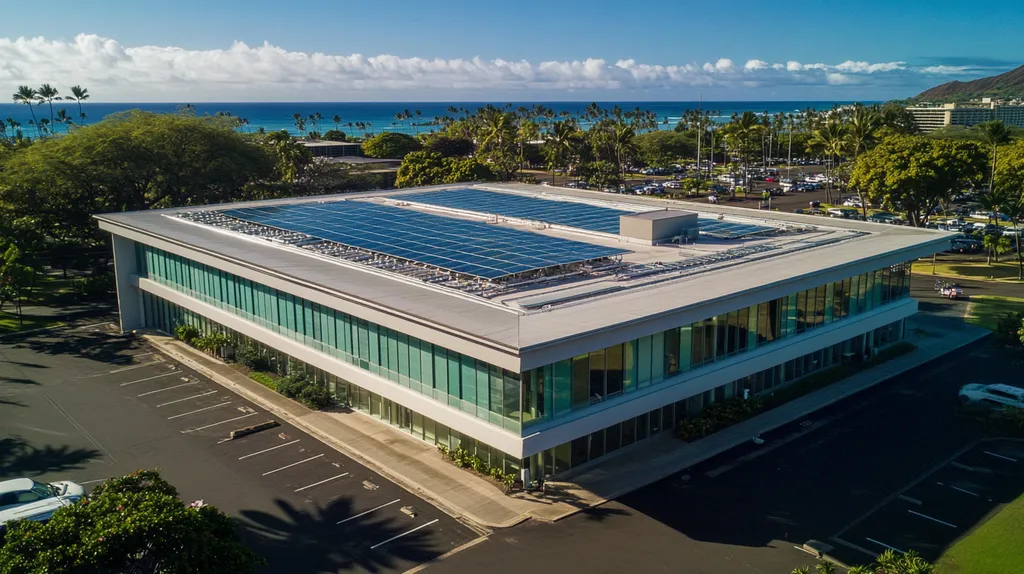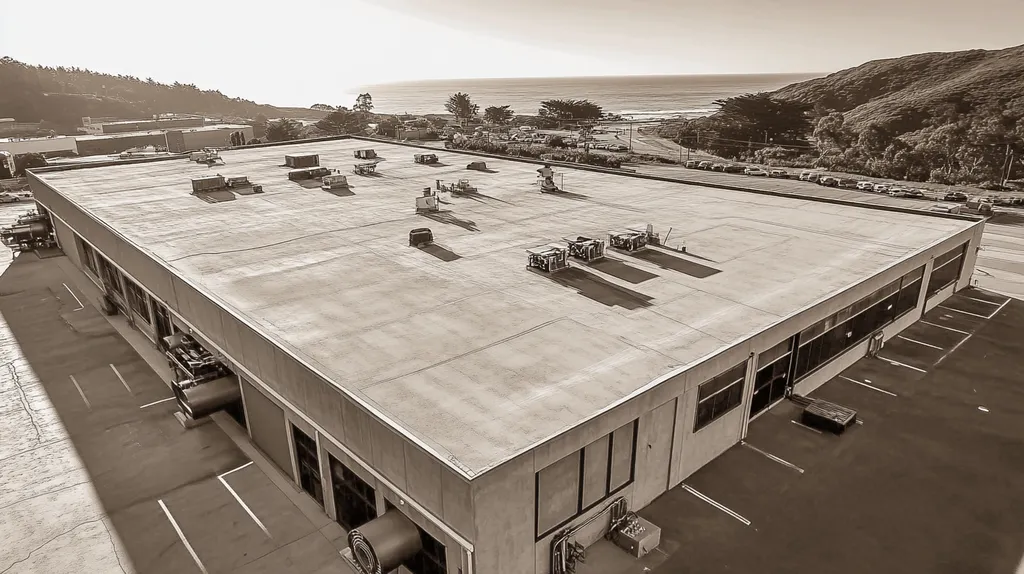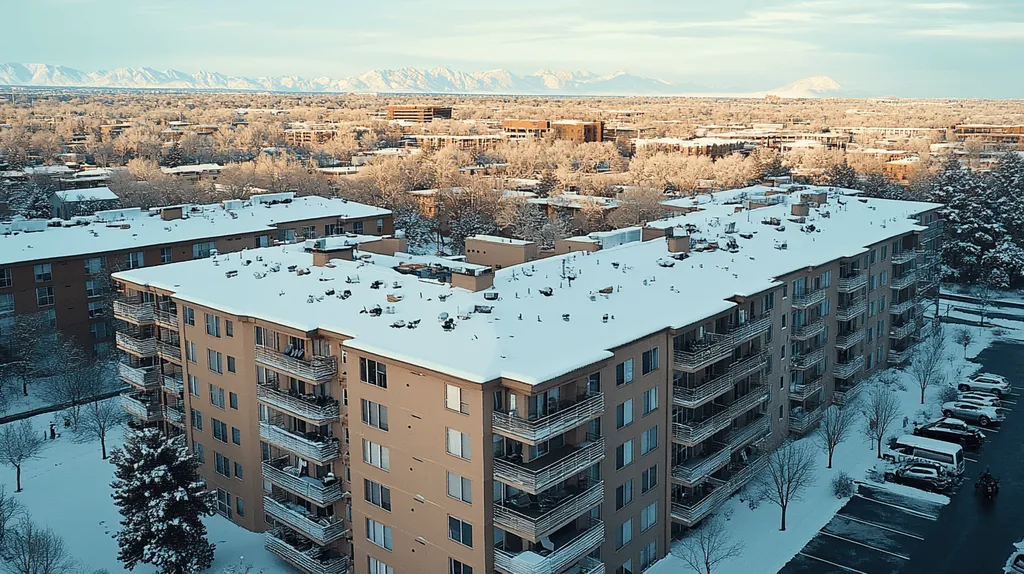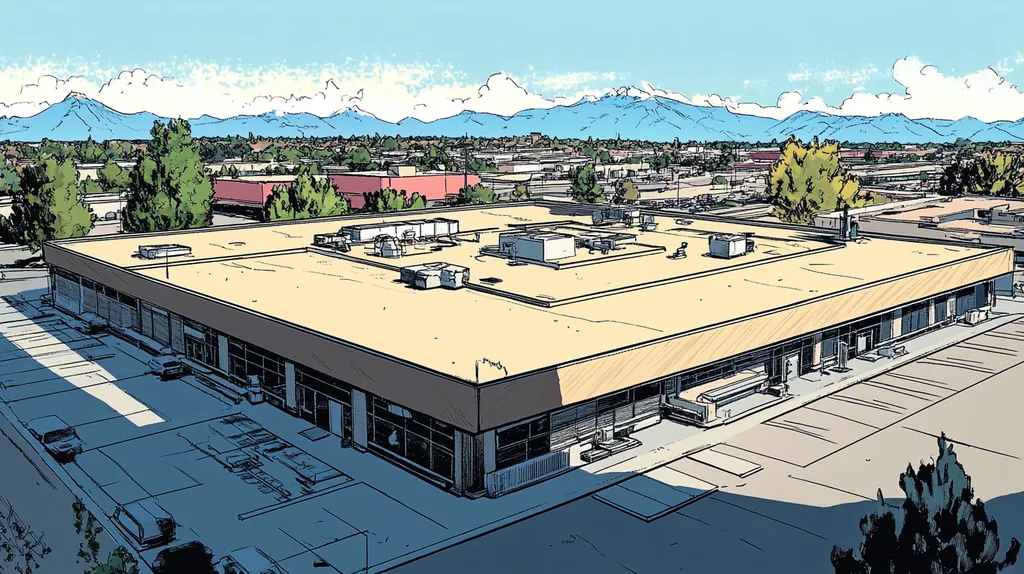In commercial roofing, proper documentation of coating applications can mean the difference between a 20-year success story and a costly failure within months. Industry studies show that 65% of premature coating failures stem from poor documentation and quality control during installation.
From surface preparation specifications to final inspection protocols, maintaining detailed records throughout the coating process protects both building owners and contractors while ensuring optimal performance.
This comprehensive guide breaks down the essential documentation requirements, quality control checkpoints, and verification procedures that safeguard your roof coating investment.
SECTION 1: THE BASICS EXPLAINED
In today’s commercial building sector, roof coating decisions directly impact operational costs and building longevity. Recent industry data shows that properly applied roof coatings can extend a roof’s lifespan by 10-15 years, while reducing cooling costs by up to 35%. However, incorrect coating choices or poor application methods can lead to premature failure and costly repairs. Understanding the fundamentals of roof coatings is essential for making informed decisions that protect your investment.
What It Is (In Plain Language)
Roof coatings are specialized liquid compounds that create a seamless, protective layer over existing roofing materials. Think of them as a durable shield that guards against UV rays, rain, snow, and temperature fluctuations.
These coatings come in several formulations, including acrylic, silicone, and polyurethane. Each type offers specific advantages – some excel at UV reflection, while others provide superior waterproofing.
Most coatings can be applied directly over existing roofing systems, eliminating the need for costly tear-offs. This capability not only saves money but also reduces landfill waste.
The coating thickness typically ranges from 20 to 40 mils (about the thickness of a credit card), creating a robust barrier that can significantly extend roof life.
Why It Matters (To Your Building)
A well-chosen roof coating serves as more than just protection – it’s a strategic investment in your building’s future. Proper coating selection can reduce internal building temperatures by up to 20 degrees during peak summer months.
Energy savings from reflective coatings often pay back the initial investment within 3-5 years through reduced cooling costs. This benefit becomes increasingly important as energy prices continue to rise.
Modern roof coatings also help prevent leaks and moisture infiltration, protecting expensive equipment and inventory below. Water damage from roof leaks ranks among the most costly building maintenance issues.
Additionally, many coating systems qualify for energy efficiency tax incentives and can contribute to LEED certification points, adding direct financial benefits beyond basic protection.
How It Works
The success of a roof coating system begins with proper surface preparation. The roof must be thoroughly cleaned and repaired before coating application can begin.
Successful installation requires careful attention to detail, including sealing all seams and properly treating penetrations and flashings. Multiple inspections throughout the process ensure quality results.
The coating creates a seamless membrane that moves with the building as temperatures change. This flexibility prevents cracking and maintains the protective barrier integrity over time.
Most modern coatings are applied white to maximize reflectivity and enhance overall performance. Proper application techniques ensure even coverage and optimal protection. (source: YouTube – Roof Coating Installation Guide)
SECTION 2: PRACTICAL APPLICATIONS
The strategic application of commercial roof coatings can mean the difference between a long-lasting, high-performing roof and premature system failure. Studies show that uncoated roofs often require replacement up to 10 years earlier than properly coated systems. Today’s facility managers face increasing pressure to extend roof life while reducing energy costs and maintenance expenses. Understanding when and how to leverage coating technologies is crucial for protecting valuable building assets.
Common Uses & Examples
Roof coatings serve multiple critical functions across various commercial roofing systems. Each type offers specific advantages – acrylic coatings provide excellent UV resistance and affordability, silicone excels at waterproofing, while polyurethane delivers superior abrasion and impact resistance. (source: Maumee River Construction)
Metal roofs particularly benefit from coating applications, as they prevent rust formation and seal fastener points that commonly develop leaks. The seamless membrane created by quality coatings eliminates weak points where water infiltration typically begins.
Single-ply membrane systems gain renewed weather resistance and UV protection from appropriate coating selections. This extends membrane life while maintaining flexibility through extreme temperature cycles.
Built-up roofing systems utilize coatings to refresh weathered surfaces and restore waterproofing capabilities. The coating layer provides an additional barrier against ponding water and harsh environmental conditions.
When You Need It Most
Timing is critical when considering roof coating applications. The ideal window occurs when a roof shows early signs of aging but before significant deterioration sets in. This preventive approach costs far less than waiting until major problems develop.
Seasonal considerations play a vital role in application scheduling. Spring and fall typically offer optimal conditions with moderate temperatures and lower humidity levels that ensure proper curing.
Buildings experiencing increased cooling costs or interior temperature fluctuations should prioritize coating evaluation. These symptoms often indicate degraded reflectivity or compromised insulation performance.
Facilities approaching warranty expiration dates should assess coating options as a cost-effective life extension strategy. This proactive step can add 10-15 years of service life at a fraction of replacement costs.
Interactions With Other Systems
Roof coatings must work in harmony with existing drainage patterns and equipment installations. Proper application techniques ensure positive drainage while maintaining watertight seals around penetrations and mechanical equipment.
HVAC efficiency improves when reflective coatings reduce roof surface temperatures. The cooler roof environment allows air handling units to operate more efficiently, reducing strain on cooling systems.
Solar panel installations benefit from reflective coating applications. The enhanced surface reflectivity can increase panel efficiency while the coating’s waterproofing properties protect mounting points.
Building automation systems often integrate more effectively with coated roofs. Temperature sensors provide more accurate readings when roof surfaces maintain consistent thermal properties throughout their service life.
SECTION 3: KEY TERMINOLOGY DECODED
In the complex world of commercial roofing, terminology confusion costs building owners millions annually in misapplied coatings and premature failures. Clear understanding of technical terms directly impacts project success, warranty compliance, and long-term performance. Today’s facility managers must navigate an increasingly technical landscape where precise communication can mean the difference between a 20-year coating success and a costly failure within the first season.
Essential Terms Explained
Surface preparation forms the foundation of every successful coating project. This includes thorough cleaning with high-pressure washing equipment and careful inspection of all roofing components to identify necessary repairs. (source: GAF Roof Coating Installation Guide)
Adhesion measures how strongly a coating bonds to the roof surface. Poor adhesion leads to blistering, peeling, and coating failure, while proper adhesion ensures the coating remains intact through years of weathering.
Solar reflectance indicates how effectively a coating reflects sunlight. Higher reflectance values translate directly to lower cooling costs and reduced thermal stress on the roofing system.
Tensile strength describes a coating’s ability to resist tearing and maintain integrity under stress. This property becomes particularly important in areas with high wind exposure or frequent maintenance traffic.
Industry Jargon Translated
Dry mil thickness represents the final coating thickness after curing. Understanding this measurement helps ensure proper material coverage and warranty compliance.
Substrate compatibility refers to how well a coating works with the existing roof surface. Not all coatings bond effectively to all roof types, making this assessment critical for project success.
Elongation percentage indicates how far a coating can stretch without breaking. Higher elongation values allow the coating to better accommodate building movement and thermal cycling.
VOC content measures the amount of volatile organic compounds in a coating. Lower VOC products offer environmental benefits and often comply with strict regional regulations.
Measurement & Units Simplified
Coverage rates typically range from 80 to 100 square feet per gallon. These rates vary based on surface texture and coating type, directly impacting material quantities and project costs.
Application temperature requirements usually fall between 50-90°F. Working outside these ranges can compromise coating cure times and final performance.
Relative humidity affects coating cure time and should typically remain below 85% during application. Higher humidity levels can prevent proper curing and lead to adhesion problems.
Wet film thickness gauges measure coating depth during application. Regular measurements ensure consistent coverage and help achieve specified dry film requirements.
SECTION 4: DECISION FACTORS
Making informed roof coating decisions has become increasingly critical as building operational costs soar. Research shows that poor coating choices can double maintenance expenses within the first five years, while optimal selections can reduce cooling costs by up to 35%. The stakes are particularly high for facilities with sensitive equipment or operations, where a coating failure could result in hundreds of thousands in damage and lost productivity.
Cost Considerations
Initial material costs represent only a fraction of the total investment in a roof coating system. Proper surface preparation, specialized equipment requirements, and skilled labor contribute significantly to project expenses.
Quality coatings typically range from $2-8 per square foot installed, with variations based on roof condition, coating type, and application complexity. These costs must be weighed against potential energy savings and extended roof life.
Lifecycle cost analysis reveals that premium coatings often deliver superior value despite higher upfront costs. Energy savings, reduced maintenance requirements, and longer service life frequently justify the additional investment.
Building owners should factor in regional climate conditions, energy costs, and maintenance budgets when evaluating coating options. A comprehensive cost analysis helps prevent expensive miscalculations.
Performance Trade-offs
Silicone roof coatings demonstrate superior UV protection and resistance to ponding water, with modern formulations requiring less material to achieve required thickness. Their slower erosion rate and stable physical properties make them particularly suitable for harsh environments. (source: American WeatherStar)
Different coating types offer varying levels of resistance to foot traffic, chemical exposure, and temperature extremes. Buildings with frequent roof access require more durable coatings despite potentially higher costs.
Application windows and cure times vary significantly between coating types. Some materials offer faster installation but may have more stringent weather requirements during application.
Energy efficiency goals must be balanced against durability requirements. While some coatings excel at heat reflection, they may require more frequent recoating to maintain performance.
Lifespan & Durability Factors
Environmental conditions dramatically impact coating longevity. UV exposure, rainfall intensity, temperature fluctuations, and local air quality all influence performance and degradation rates.
Regular maintenance programs can extend coating life by 25-50%. Simple actions like periodic cleaning, prompt repairs, and scheduled inspections help maintain protective properties.
Coating thickness and proper application technique directly affect durability. Under-application to save material costs often results in premature failure and void warranties.
Warranty terms provide important insights into expected performance. Premium coatings typically offer longer coverage periods and fewer exclusions, reflecting manufacturer confidence in product durability.
SECTION 5: COMMON CHALLENGES
Roof coating challenges represent a critical threat to building integrity and operational costs. Industry data shows that over 70% of premature coating failures stem from preventable application and maintenance issues. When coating systems fail, repair costs often exceed three times the original installation price, while leaving facilities vulnerable to water damage and energy inefficiency.
Frequent Problems & Solutions
Poor surface preparation stands as the leading cause of coating failure. Inadequate cleaning, moisture trapped in the substrate, and failure to address existing damage can doom a coating project before it begins.
Application thickness inconsistencies create vulnerable areas prone to premature degradation. Using proper spray equipment and maintaining consistent application pressure helps ensure uniform coverage.
Environmental conditions during installation significantly impact coating performance. Temperature extremes, high humidity, and unexpected precipitation can compromise adhesion and curing.
Material incompatibility between existing roofing and new coatings leads to adhesion failures. Thorough compatibility testing and proper primer selection prevent costly delamination issues.
Warning Signs To Watch For
Surface blistering and bubbling indicate trapped moisture or improper adhesion. These early warning signs require immediate investigation to prevent widespread coating failure.
Premature chalking or erosion signals coating breakdown from UV exposure or harsh environmental conditions. Regular surface inspections help identify degradation before water infiltration occurs.
Ponding water lasting more than 48 hours suggests drainage issues that can accelerate coating deterioration. Addressing drainage problems promptly prevents premature aging and coating failure.
Seam separation and flashing deterioration compromise the coating system’s integrity. These high-stress areas require special attention during inspections and maintenance.
Preventative Approaches
Regular cleaning and debris removal prevent organic growth and maintain coating reflectivity. A quarterly maintenance schedule helps preserve coating performance and extends service life.
Core sampling and moisture surveys identify potential problems before visible damage occurs. These diagnostic tools guide maintenance decisions and prevent catastrophic failures.
Documenting weather conditions and application parameters during installation provides valuable reference data. This information helps troubleshoot future issues and guides maintenance planning.
Establishing clear maintenance protocols and training facility staff ensures consistent care. Well-defined procedures and regular inspections catch problems early when repairs are less costly.
SECTION 6: NEXT STEPS & RESOURCES
The commercial roof coating industry faces mounting challenges as building owners navigate complex decisions about protecting their assets. Recent data shows that improper coating selection and application leads to $3.7 billion in annual repair costs across North America. Making informed choices about providers, understanding current standards, and staying educated about best practices has never been more critical for maintaining building value and operational efficiency.
Questions To Ask Providers
Qualification verification should be your first priority when evaluating coating contractors. Request detailed documentation of their manufacturer certifications, insurance coverage, and specific experience with your roof type.
Project specifics matter immensely in coating success. Ask for a detailed scope of work that includes surface preparation methods, material specifications, and application thickness requirements.
Quality control measures separate excellent contractors from mediocre ones. Inquire about their inspection protocols, documentation procedures, and methods for verifying proper mil thickness during application.
Warranty terms reveal a contractor’s confidence in their work. Request sample warranties and have them explain exactly what is and isn’t covered, including response times for warranty claims.
Industry Standards & Guidelines
Several key standards govern roof coating applications. ASTM D6083 for acrylic coatings and ASTM D6694 for silicone coatings establish minimum performance requirements that quality products must meet.
Proper surface preparation standards exist for every roof type. Metal roofs, single-ply membranes, and built-up roofing each require specific preparation techniques detailed in NRCA guidelines.
Application environment standards are equally crucial. Temperature, humidity, and dew point requirements must be carefully monitored and documented throughout the installation process.
Regular inspections following industry protocols help maintain coating performance. The Roof Consultants Institute (RCI) provides detailed guidelines for inspection frequency and documentation requirements.
Further Learning Simplified
Maumee River Construction offers comprehensive guidance on coating selection, detailing how different formulations perform under various conditions. Their resources help owners understand crucial differences between acrylic, silicone, and other coating types for informed decision-making. (source: Maumee River Construction)
Professional organizations provide valuable ongoing education. The Roof Coatings Manufacturers Association (RCMA) offers technical bulletins and webinars covering emerging technologies and application techniques.
Manufacturer training programs deliver practical insights into proper application methods. Many leading manufacturers offer free online courses covering product selection, surface preparation, and maintenance requirements.
Local building code updates impact coating projects significantly. Regular consultation with code officials and industry publications helps stay current with changing requirements.
The Bottom Line
With roof coating failures costing commercial property owners over $3.7 billion annually, proper documentation and quality control have never been more critical.
The difference between coating success and failure often comes down to thorough record-keeping throughout the installation process, from initial surface preparation to final inspection protocols.
Industry data shows that buildings with properly documented coating installations achieve 40% longer service life and maintain up to 95% of their initial performance capabilities.
By following established documentation protocols, verifying contractor qualifications, and maintaining detailed maintenance records, facility managers can protect their coating investments and maximize long-term building performance.
The future of commercial roof coatings depends on rigorous documentation standards that ensure consistent quality and reliable performance across the industry.
FREQUENTLY ASKED QUESTIONS
Q. What are the basics of commercial roof coatings?
A. Roof coatings are liquid compounds that protect existing roofs from various weather elements. They extend roof life, reduce cooling costs, and can be applied without removal of existing materials. Proper understanding is crucial to avoid costly mistakes.
Q. How are commercial roof coatings applied in practice?
A. Applying roof coatings strategically can significantly extend roof life and prevent premature failure. Proper timing for application is essential, especially for roofs showing early signs of aging, to avoid costly replacements before major issues arise.
Q. What terminology should I know about industrial roofs?
A. Understanding terminology is vital to effective communication and project success. Key terms include surface preparation, adhesion, and solar reflectance, which all play crucial roles in the performance and lifespan of roof coatings.
Q. What decision factors should I consider for commercial roof coatings?
A. Key factors include cost, performance trade-offs, and long-term durability. Lower initial costs can lead to high lifetime expenses, so evaluating the overall lifecycle and potential savings is crucial for making an informed choice.
Q. What common challenges arise with commercial roof coatings?
A. Challenges often include poor surface preparation and environmental conditions during application. These issues can lead to premature coating failures, resulting in extensive repair costs and vulnerabilities to water damage and energy waste.
Q. What next steps should I take for industrial roof coatings?
A. Begin by asking potential contractors detailed questions regarding their qualifications and project specifics. Additionally, familiarize yourself with industry standards and guidelines to ensure proper application and maintenance practices for your roofing system.
Q. How do coatings affect the energy efficiency of commercial roofs?
A. Coatings can significantly enhance energy efficiency by reflecting sunlight, reducing roof surface temperatures. This results in lower cooling costs and improved HVAC efficiency, which directly benefits the overall performance and comfort of commercial buildings.

